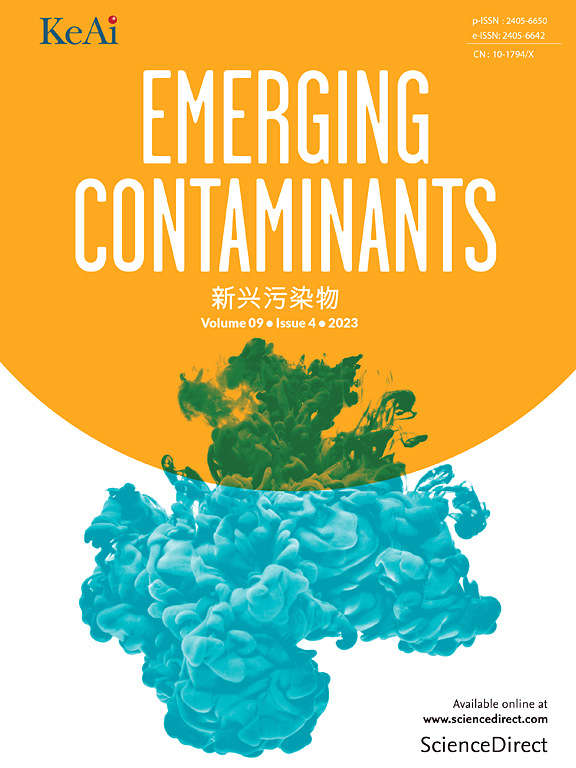Technological advances in per- and polyfluoroalkyl substances (PFAS) removal from landfill leachate: Source identification and treatment options
IF 5.3
2区 环境科学与生态学
Q1 ENVIRONMENTAL SCIENCES
引用次数: 0
Abstract
Per- and polyfluoroalkyl substances (PFAS) are a group of persistent organic compounds that present significant risks to both environmental systems and human health. The increasing concentration of PFAS in landfill leachate has been an emerging concern for waste management. This article presents a critical review of the current state-art of the technologies and processes for PFAS removal from landfill leachate. The article primarily addresses two aspects: (a) identifying the primary sources contributing to PFAS leaching, which includes examining various waste streams such as municipal solid waste (food packaging products, household consumer goods, cosmetics, electronic components), construction and demolition debris, and industrial waste (bio-solids, incineration ash, and manufacturing waste); (b) evaluating different technological options for PFAS removal from leachate, such as adsorption techniques, membrane filtration, electrochemical oxidation, photocatalytic oxidation, and biological treatment. The findings showed that the PFAS concentrations across different MSW components varied significantly, ranging from as low as 0.1 ng/L to as high as 150,000 ng/L, depending on the PFAS type and source. Additionally, the article explores the factors influencing the performance of these treatment technologies based on the experimental results, development stage, reaction time, and removal efficiency. Adsorption (granular and magnetic activated carbon) and membrane filtration processes have demonstrated higher PFAS removal efficiency ranging from 70 % to 95 %. This study emphasized the need for effective PFAS treatment strategies while addressing ongoing challenges and future research directions in mitigating their environmental impact.
从垃圾填埋场渗滤液中去除全氟烷基和多氟烷基物质的技术进展:来源识别和处理方案
全氟烷基和多氟烷基物质(PFAS)是一组对环境系统和人类健康构成重大风险的持久性有机化合物。垃圾渗滤液中PFAS浓度的增加已成为垃圾管理的一个新问题。本文介绍了目前从垃圾渗滤液中去除PFAS的技术和工艺的最新进展。本文主要涉及两个方面:(a)确定导致PFAS浸出的主要来源,其中包括检查各种废物流,如城市固体废物(食品包装产品、家用消费品、化妆品、电子元件)、建筑和拆除碎片以及工业废物(生物固体、焚烧灰和制造废物);(b)评估从渗滤液中去除PFAS的不同技术选择,如吸附技术、膜过滤、电化学氧化、光催化氧化和生物处理。研究结果表明,根据不同的PFAS类型和来源,不同组分的PFAS浓度差异显著,低至0.1 ng/L,高至150,000 ng/L。并从实验结果、发展阶段、反应时间、去除效率等方面探讨了影响这些处理技术性能的因素。吸附法(颗粒活性炭和磁性活性炭)和膜过滤法的PFAS去除率在70% ~ 95%之间。本研究强调需要有效的PFAS治疗策略,同时解决当前的挑战和未来的研究方向,以减轻其对环境的影响。
本文章由计算机程序翻译,如有差异,请以英文原文为准。
求助全文
约1分钟内获得全文
求助全文
来源期刊

Emerging Contaminants
Medicine-Public Health, Environmental and Occupational Health
CiteScore
10.00
自引率
6.70%
发文量
35
审稿时长
44 days
期刊介绍:
Emerging Contaminants is an outlet for world-leading research addressing problems associated with environmental contamination caused by emerging contaminants and their solutions. Emerging contaminants are defined as chemicals that are not currently (or have been only recently) regulated and about which there exist concerns regarding their impact on human or ecological health. Examples of emerging contaminants include disinfection by-products, pharmaceutical and personal care products, persistent organic chemicals, and mercury etc. as well as their degradation products. We encourage papers addressing science that facilitates greater understanding of the nature, extent, and impacts of the presence of emerging contaminants in the environment; technology that exploits original principles to reduce and control their environmental presence; as well as the development, implementation and efficacy of national and international policies to protect human health and the environment from emerging contaminants.
 求助内容:
求助内容: 应助结果提醒方式:
应助结果提醒方式:


